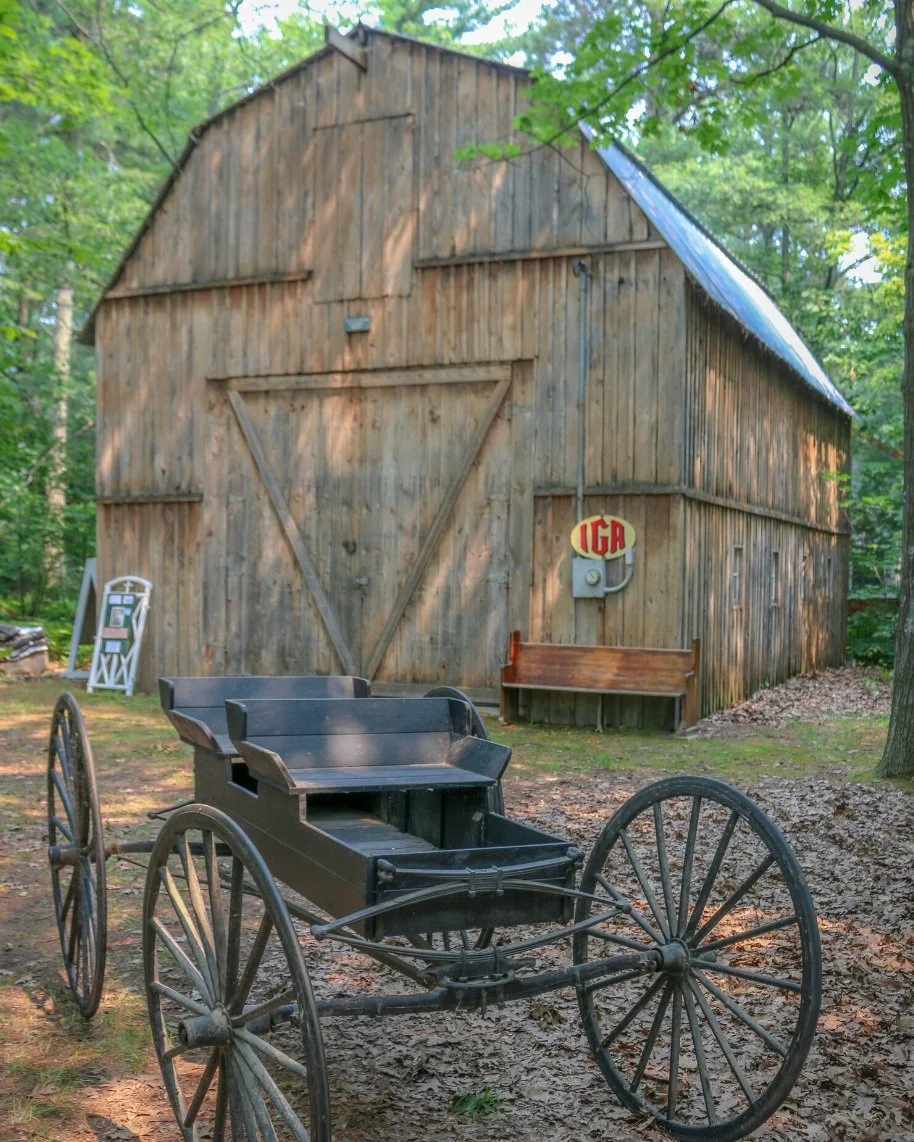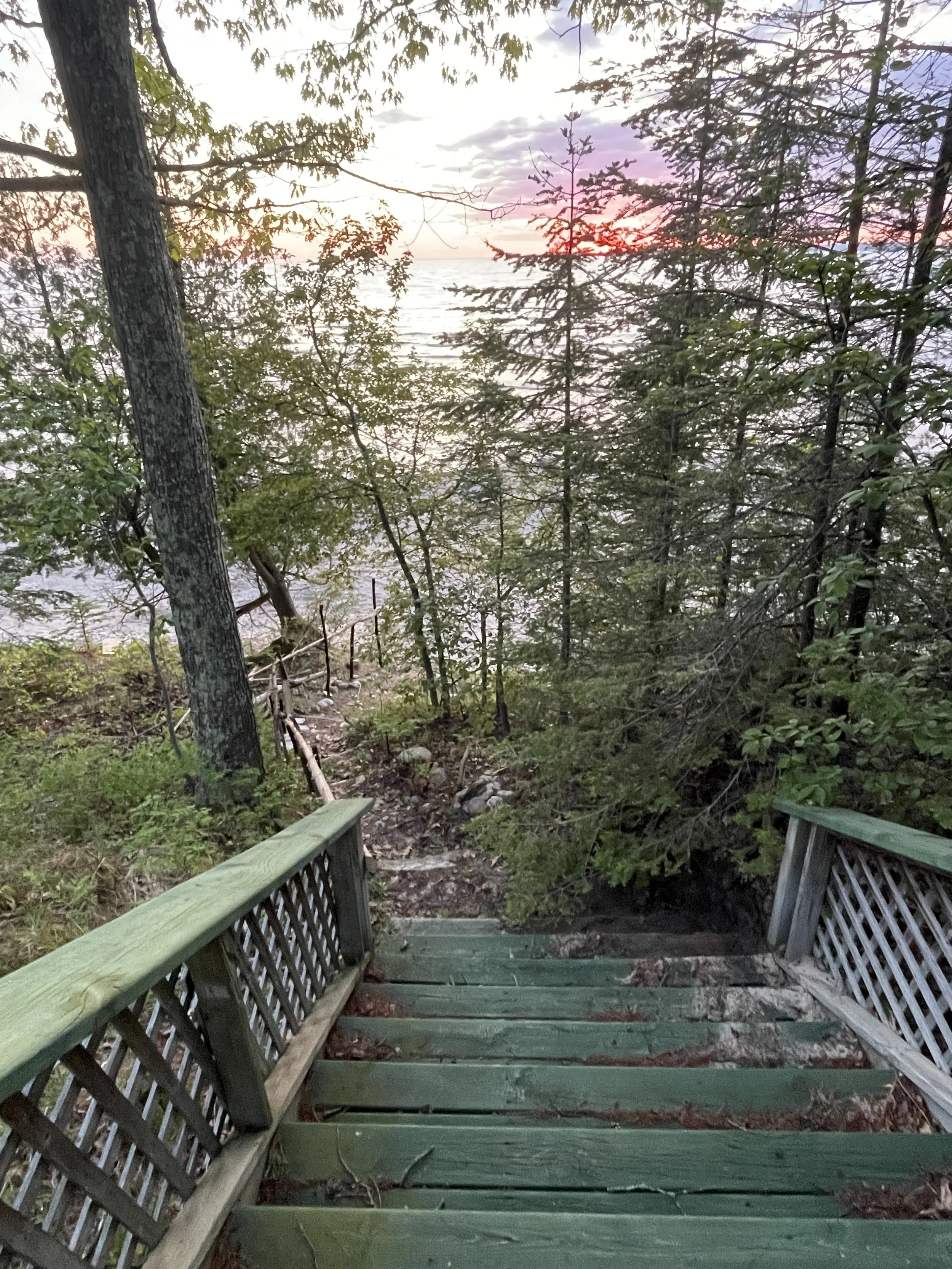Beaver Island History
Archeological findings have revealed that the archipelago of islands that include Beaver Island, its largest, has been inhabited by a variety of different populations for many millennia. Until the 1830’s for at least 300 years the peoples we now know as the Odowa and Chippewa tribal nations fished and traded with the other Anishinaabe peoples of the Great Lakes region. After European peoples found there way to the region, the island chain became a stop off point for ships used by the French and English fur trappers and traders, a Mormon colony led by James Strang dominated the island and its culture for a quarter century in the mid 1800’s, and the island became a refuge for potato famine Irish from the Isle of Aranmore on the the west coast of Ireland. At this point the island became known as America’s Emerald Isle. For the next 100 years fishing, logging and the shipping harbor supported the population from mainly indigenous and Irish backgrounds.
There is much of this rich history available to explore by visiting ancient sacred sites, remnants of Morman barns, and exhibits at Historical and Marine museums to name just a few. Today, approximately 600 people call the island home year round, and the population swells to around 1800 during the summer season. Of all of the peoples who have called these island home, three stand out as most significant to the populations living here today.
Native Indigenous History
Since the late 1600’s, the Odawa peoples (known to themselves as Anishinawbek) have lived around the waters of Lake Michigan and have utilized Beaver Island, Garden Island, and others in the Beaver Archipelago, for hunting and fishing grounds, and more importantly, as places for sacred ceremony and burial grounds. Because of it’s placement in the top of Lake Michigan, the archipelago was not utilized for permanent residence. Over the centuries, the Odawa, meaning ‘traders’, became known as the Ojibwa, Odawa and Pottawatami. Other tribal nations, including the Chippewa, Sauk, Menominee, and Winnebego frequented the Beaver Islands to hunt, fish and trade. Many place names still honor members of the Beaver Clan (Amik in Odawa) of the Odawa here on the island. The Island has two townships, the larger of the two is Peaine Township, names for the last chief of the Beaver Clan, and Angeline’s bluff, named for Angeline Wabaninkee, and elder and leader from Peshabetown, located on the top of the bluff.
Irish History
In the early days of the American Colonies political and religious issues in Ireland and Scotland drove people to seek a better life in North America. Because the Great Lakes had many similar features to the British Isles, settling here in the Island chain was an attractive option. Hunting, trapping and fishing were plentiful. Families left behind heard stories of the beauty and abundance of the Beaver Island life. Many years later, when the potato famine hit Ireland causing devastation and death to much of the Irish population, some of the people who lived on Aranmore Isle, on the western shores of Ireland decided to pick up and make the move to Beaver Island, known to them as the ‘other’ Emerald Isle. Boyle, Connaghan, Donlevy, Gillespie, Green/Greene, Heller/Perdue, McCann, McCauley/Malloy, McDonough, and O’Donnell.Gallagher and Martin Clans took the trip and now call Beaver Island home.
Mormon History
After the death of Joseph Smith in Ohio, the founder of the Church of Jesus Christ Latter Day Saints, Brigham Young continued to Utah and James Strang led his followers north, eventually landing on Beaver Island where they established a Mormon colony that flourished for approximately 25 years. After the death of James Strang, who had crowned himself king, the native and Irish folks that were driven off of the island by the arriving Mormons, returned and drove the Mormons returning the favor. The Mormons resettled in Wisconsin. The legacy of the Mormons is still felt in the names of inland lakes, abundance of apple orchards, Mormon style barns, and the Mormon print shop which is now the historical museum.
green Terra Sanctuary History
The creation of Green Terra Sanctuary is the flower of Susan’s growth journey and an offering back to others in a debt of gratitude for the help of Spirit, Nature and the many people who have believed in a vision of a space for healing and belonging in a world in crisis. Over the years, Susan has become deeply aware of our human desire for relief from life’s traumas in ways that actually facilitate our mental, emotional, physical and spiritual maturation. The idea of a ‘retreat space’ that is guided by values and experiences of the sacredness of life that can help us bridge into a more holistic interconnected cultural dynamic has been a vision in her mind for years. During the pandemic it became very clear that there are so many people who offer themselves in service to life and others that are burning out from the lack of opportunity to immerse themselves in the world of nature in such a way that they can directly access and engage with the wisdom and balance Nature provides. So, upon discovering that Spirit was inviting her to come live on Beaver Island where such liminal space exists in abundance, this vision began to manifest into a physical form. The vision has been nurtured and fed by the land, the worlds of nature, wise friends and colleagues, and a contractor who has found a resonance with our vision and mission and is helped to create a building that honors the sacred space upon which it stands.






